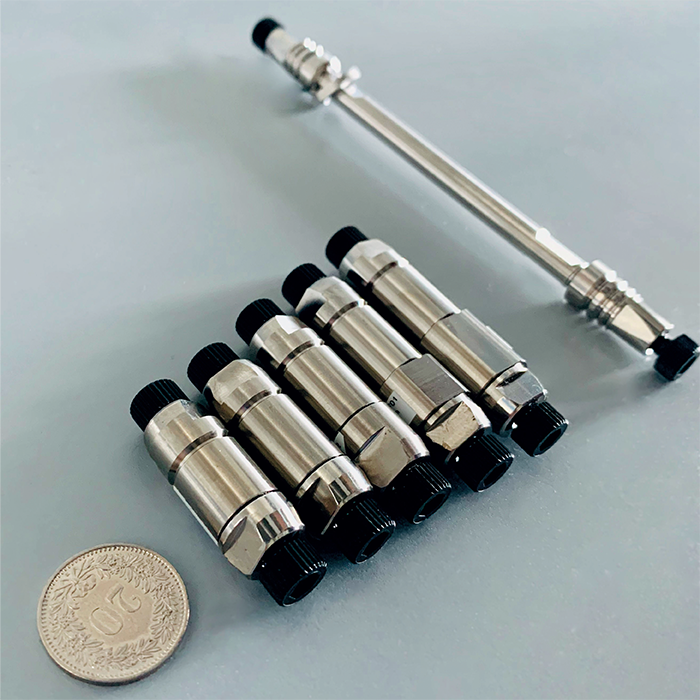In our laboratory, we’ve been trying to assess the feasibility of using ultra-short columns (2–20 mm) – much shorter than the standard 100–250 mm – for the analysis of therapeutic proteins for some years. And I had the opportunity to present our results at HPLC 2023 in Düsseldorf, Germany.
Ultra-short columns have a number of advantages; namely, shorter analysis and equilibration times, reduced cost in production, and significantly reduced pressure drop. The approach is not new – it was first trialed in the 1980s – but the quality of columns and chromatographic systems back then hindered the technology’s full potential. Additionally, the biopharmaceutical market was in its infancy, whereas today it’s booming – further reason for the scientific community to take interest in this approach.
But how exactly can these macromolecules be successfully analyzed by such a short column? To understand this process, we must first note that proteins have a very specific retention mechanism in liquid chromatography: on/off or bind/elute. By increasing the composition of the mobile phase by just a few percent, the state of the protein changes – it no longer interacts with the stationary phase and traverses the column at the same speed as the mobile phase, which is not retained. This means that only the first few millimeters of the column are used for discriminating proteins – the rest of the column is useless!

For example, when analyzing intact monoclonal antibodies (mAbs) of 150 kDa, our laboratory achieved a resolution in a 5 mm column that was identical to the resolution observed in a 150 mm column, when using similar gradient time. When decreasing the gradient time to less than 1 minute, the performance achieved on the shortest column was far superior to the one obtained on the longest column. The same behavior was also observed when analyzing large fragments (sub-units) of mAbs – with a size of 25-50 kDa.
All that said, there is one major limitation associated with the use of ultra-short columns. We realized that, as the column volume is reduced, the contribution of the chromatographic system to the peak broadening/extra-column effects becomes significant. Therefore, it is imperative to use chromatographic systems that are perfectly optimized in terms of volume so that significant performance loss can be avoided.
Obviously, this issue could be overcome if the providers of chromatographic instruments completely redesigned their HPLC instruments to reduce all the tubing located between the injector and detector. In particular, the tubing that connects the column outlet and the detector inlet is one of the most important sources of band broadening when working under gradient conditions. A short column in a miniaturized oven located directly at the detector entrance would be highly valuable to minimize extra-column effects…
This ultra-short column strategy has mainly been evaluated in reversed phase liquid chromatography (RPLC) mode, but the same on/off retention mechanism is also observed in ion exchange chromatography (IEX), hydrophobic interaction chromatography (HIC), and hydrophilic interaction chromatography (HILIC). We have already proved that separations of therapeutic mAbs can be achieved in less than one 1 minute in IEX with columns of only 10 mm; however, due to the non-porous nature of the IEX material, the column volume was limited and band broadening was non-negligible under IEX conditions. Peaks appear to be broader in IEX than RPLC; indeed, the full potential of short IEX columns cannot be reached. In the case of HILIC, the problem comes from the sample diluent – proteins are formulated in aqueous media, while HILIC works much better when the sample is diluted in acetonitrile. Therefore, with a short HILIC column, we must inject very low volume to maintain sharp peaks, leading to severe loss in sensitivity.
I believe the ultra-short-column approach has already shown it has the potential to be applied across a wide range of macromolecule applications in the pharma industry – from oligonucleotides to viruses. And continued research in this area will help us better understand the behavior and potential of ultra-short columns from a mechanistic point of view. I’m excited to see what the future holds!





